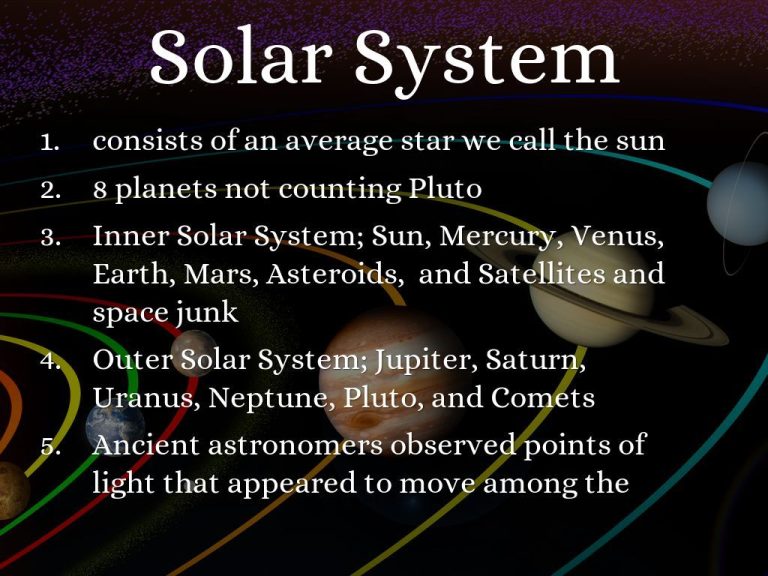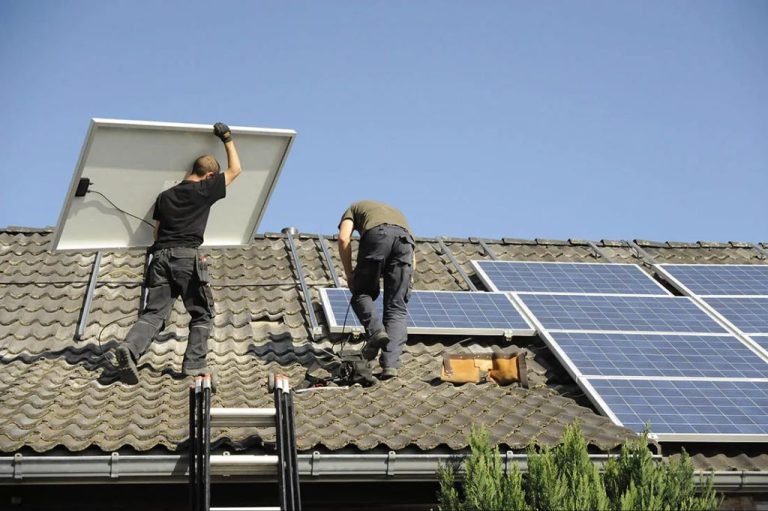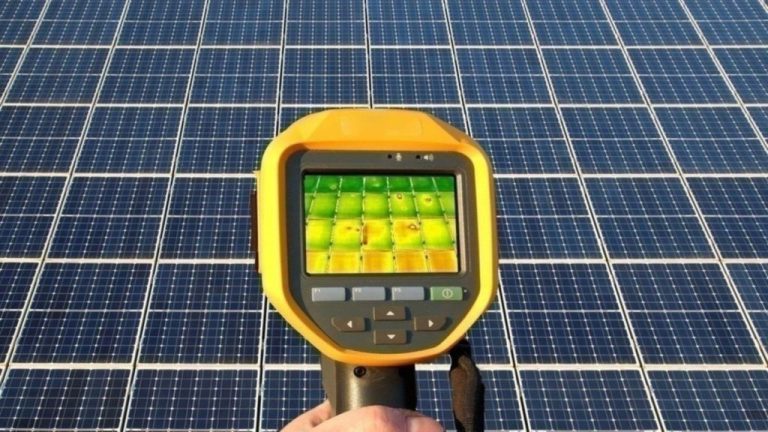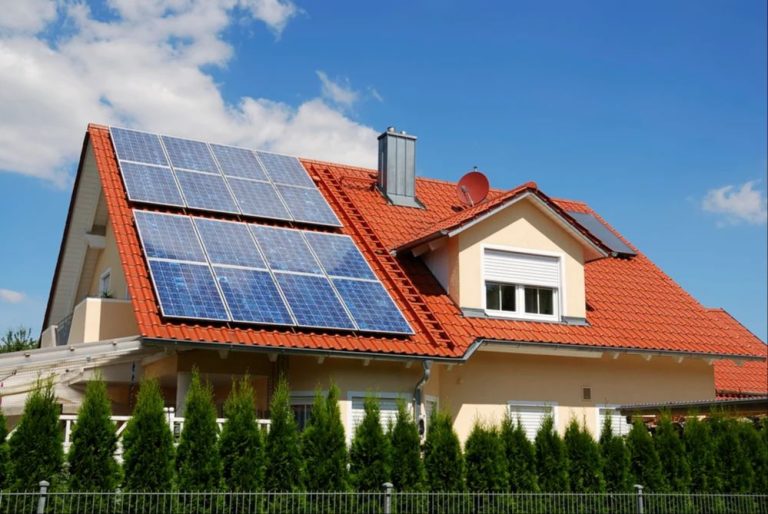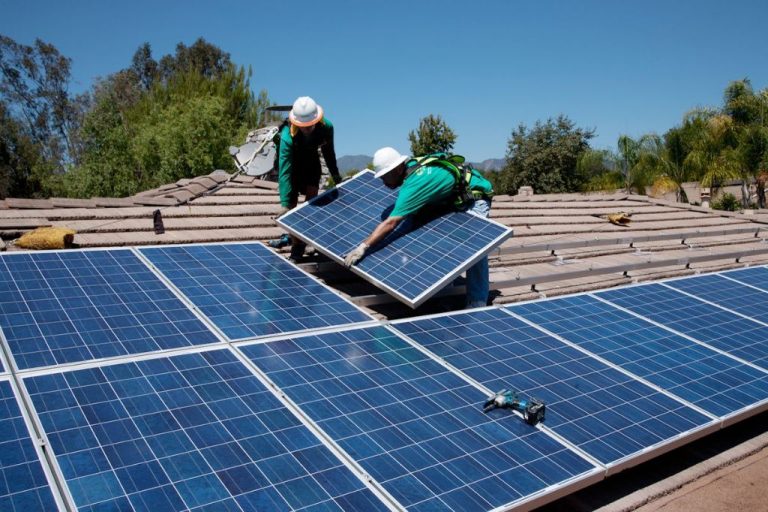Can You Run A Heating System With Solar?
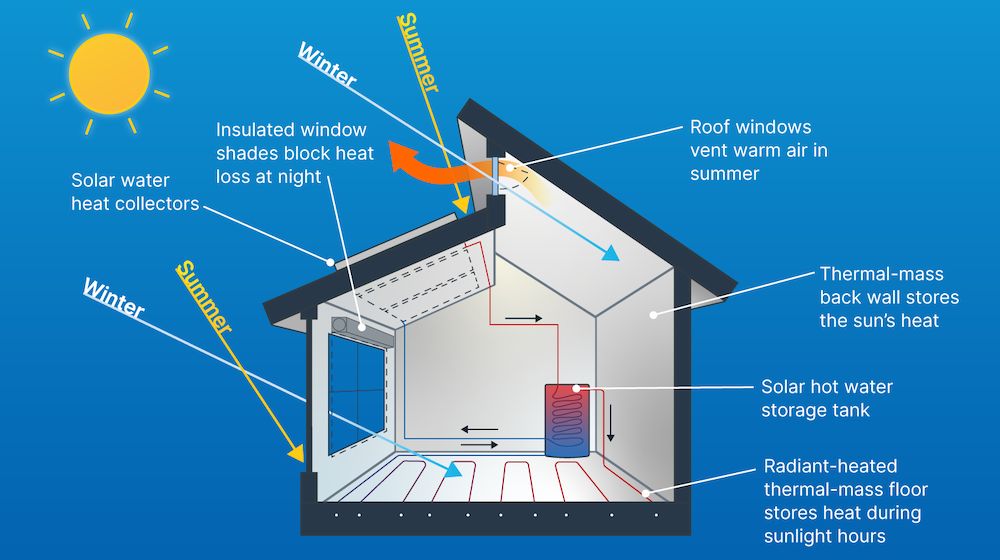
Heating systems are an essential part of homes and buildings, providing warmth and comfort during cooler weather. Traditional heating systems rely on the burning of fossil fuels like natural gas, oil, or propane to generate heat. However, there is a renewable energy alternative: solar heating systems.
Solar energy is a clean, renewable resource that can be harnessed in different ways. Solar photovoltaic (PV) panels convert sunlight into electricity, while solar thermal collectors capture the sun’s heat energy. Solar heating systems utilize this thermal energy from the sun to provide space heating and hot water for residential and commercial buildings.
Unlike fossil fuel furnaces and boilers, solar heating systems rely on freely available solar radiation, not combustion. Solar energy is plentiful, renewable, and does not produce greenhouse gas emissions. While upfront costs are higher, solar heating can save money over time by lowering utility bills. With solar thermal technology continuing to improve, solar heating represents an eco-friendly path to energy efficiency for modern buildings.
Types of Solar Heating Systems
There are two main types of solar heating systems: passive solar heating and active solar heating.
Passive solar heating systems absorb heat from the sun and store it in thermal mass, such as tiles or concrete. They rely on building orientation, window placement, insulation, and thermal mass rather than mechanical components to collect, store, and distribute solar energy. Passive systems are simple, have few moving parts, and require minimal maintenance (Source).
Active solar heating systems use pumps or fans to circulate heat transfer fluids like air, water, or antifreeze between solar collectors and the building. The most common types of active solar collectors are flat-plate collectors, which are used predominantly for space heating, and evacuated-tube collectors, which are used mainly for domestic hot water (Source).
How Solar Thermal Systems Work
Solar thermal systems use solar collectors to absorb heat from the sun and transfer it to a fluid within the collector. This heated fluid is then used to provide hot water and heating in a building.
There are a few main components in solar thermal systems:
Collectors: The solar collectors contain pipes or tubes filled with a heat transfer fluid (often water or diluted antifreeze). As sunlight hits the collectors, they heat up the fluid within the pipes. Common types of collectors are flat plates, evacuated tubes, and concentrating collectors. Flat plate collectors are the most common for residential applications (Solar Thermal Heating & Water Heating | How It Works, n.d.).
Storage: The heated fluid leaving the solar collectors flows into a storage tank or thermal mass. This storage keeps the heated fluid at a useful temperature for when it’s needed for water heating or space heating. Storage helps solar thermal systems provide energy even when the sun isn’t shining (How do Solar Thermal Panels work, n.d.).
Distribution: Pumps circulate the heated fluid from the storage tank into the building’s heating system, whether it’s potable water pipes, radiant floors, fan coils, etc. The distribution system allows the heat collected from the sun to be used for domestic hot water, space heating, pool heating, and more.
Sizing a Solar Heating System
Properly sizing a solar heating system is critical to ensure it can meet your home’s hot water and/or space heating needs. The key factors to consider are:
Calculating Heating Load
To determine the proper collector and storage tank size, you first need to calculate your home’s heating load. This is the amount of energy needed per day to heat your home and water to the desired temperatures. The heating load depends on factors like your climate zone, home’s insulation, and number of occupants.
Sizing the Solar Collectors
Solar collectors are sized based on the calculated heating load and the amount of sun exposure at the installation site. As a rule of thumb, collect about 20 BTUs per square foot for homes in cold climates and around 15 BTUs per square foot in warmer climates. More collectors may be needed for homes with high hot water usage.
Sizing the Storage Tank
The storage tank capacity depends on the heating load and the amount of hot water usage. For heating systems, the tank should be large enough to store 1-2 days worth of heat. For domestic hot water, the tank should hold at least 1.5 times the daily hot water usage. Oversizing the tank allows more energy to be collected and stored.
Solar Combisystems
A solar combisystem combines solar thermal technology to provide both space heating and domestic hot water from the same solar collector array (Wikipedia). These systems utilize solar thermal collectors, usually flat plate or evacuated tube, that heat a transfer fluid. The heated fluid flows into a storage tank that provides hot water for space heating and domestic use.
The key components of a solar combisystem include (Sciencedirect):
- Solar collector loop
- Storage tank
- Control system
- Auxiliary heater
- Heat distribution system
Solar combisystems are designed to provide 60-90% of domestic hot water needs and 20-60% of space heating demand (Sciencedirect). They present an efficient way to harness solar energy for multiple needs from one integrated system. The main advantages are reduced costs compared to separate solar thermal and heating systems, and increased solar fraction compared to systems that provide only domestic hot water.
Pros and Cons of Solar Thermal Heating
Solar thermal heating systems offer several benefits but also come with some challenges to consider. According to Energysage, the main advantages of solar thermal heating include:
- Lower energy bills – Solar thermal systems can provide 50-80% of a home’s hot water needs, reducing reliance on grid electricity or gas.
- Reduced carbon footprint – Solar thermal systems produce no direct carbon emissions.
- Increased home value – Homes with solar thermal systems often have higher resale values.
- Long lifespan – Solar thermal collectors can last over 20 years with minimal maintenance.
However, there are also some downsides to consider:
- High upfront costs – Installation costs can range from $3,000-$6,000 depending on system size.
- Access to sunlight – Solar thermal performance depends on sufficient exposure to the sun’s rays.
- Supplemental heating – Most solar thermal systems require a backup energy source for cloudy days.
- Aesthetics – Solar collectors are visible and take up roof space.
Overall, solar thermal systems make the most sense for homeowners looking to reduce energy bills in the long run, especially in sunnier climates. The high initial investment can pay back over time through utility bill savings.
Cost Savings
Installing a solar heating system can provide significant cost savings over time. According to the U.S. Department of Energy, the cost of a solar water heating system for a household is around $100 per square foot, or $1,000 per square meter (Estimating the Cost and Energy Efficiency of a Solar Water …). However, solar water heating systems can reduce conventional water heating costs by 50% to 80%, providing a good return on investment.
The amount of cost savings from solar heating depends on several factors like location, system size, and available incentives. According to EnergySage, most solar customers save between $20,000 to $96,000 over the system lifetime (Solar Savings by State: How Much do Solar Panels Save?). Federal and local incentives like tax credits can reduce the upfront installation costs. For example, the federal solar tax credit covers 26% of solar system costs in 2022-2023 before dropping to 22% in 2024. Additionally, many utilities and states offer rebates and other incentives.
Ideal Locations
The climate and location have a significant impact on the effectiveness of solar heating systems. The key factors that determine a good solar location include solar radiation levels, temperature, and available space.
The best locations for solar heating tend to be in warmer climates that receive high levels of year-round sunlight. Areas like the Southwest United States, Hawaii, and parts of the Southeast see optimal solar radiation levels for solar heating systems. For example, Hawaii averages 5 to 7 kWh/m2/day of solar radiation, providing ample energy for solar heating systems [1].
Cooler climates can also utilize solar heating effectively during warmer months, but solar radiation levels drop off significantly in winter. Solar thermal systems will need backup heating sources in these locations. The key is ensuring the climate has enough sunny days overall to make the system worthwhile.
Having ample south-facing space for solar collectors is also an important consideration. Urban areas with shading limitations may not be suitable. Suburban or rural locations often provide the needed open space to maximize solar collection.
While solar heating can work in most regions, the highest savings and performance will occur in hot, sunny climates with minimal shading issues. Carefully evaluating the local climate will help determine if solar thermal systems can sufficiently meet heating needs.
Case Studies
Real world examples provide important insights into how solar thermal systems perform in actual installations. According to the Solar Energy Industries Association (SEIA), solar thermal case studies demonstrate cost savings, performance, and environmental benefits across residential, commercial, and industrial applications (https://www.seia.org/research-resources/case-study).
For instance, a case study of the John W. Olver Transit Center in Greenfield, MA found that a solar thermal system offset nearly 100% of the facility’s domestic hot water usage, reducing gas consumption by 43% (https://www.seia.org/research-resources/john-w-olver-transit-center-solar-thermal-case-study). The projected savings over 20 years is over $137,000.
Another case study examined Summit Public Schools in California, where solar thermal systems at two high schools reduced gas usage for heating swimming pools by 70-90%. This resulted in $13,500 in annual savings across the two schools (https://www.seia.org/research-resources/summit-public-schools-solar-thermal-case-study).
These real world solar thermal installations demonstrate the potential for significant cost savings and reduced fossil fuel consumption when implementing solar heating. Case studies provide vital data points and validate solar thermal systems as practical heating solutions.
Conclusion
As we’ve seen, it is possible to run a heating system with solar energy. Solar thermal systems can provide supplemental heat for space heating and domestic hot water by capturing heat from sunlight. While solar thermal systems have higher upfront costs than fossil fuel systems, they can pay for themselves over time through energy bill savings. The technology is mature and reliable for residential and commercial applications.
The future looks bright for solar thermal heating. As solar panel costs continue to fall and eco-consciousness rises, solar adoption rates will likely continue climbing. With proper system sizing and integration, solar thermal systems can offset a significant portion of heating loads across many climate zones. Continued innovation around smart controls and thermal storage will make the technology even more efficient and cost-effective. For those looking to go green and reduce their carbon footprint, solar thermal represents an outstanding renewable heating option.

